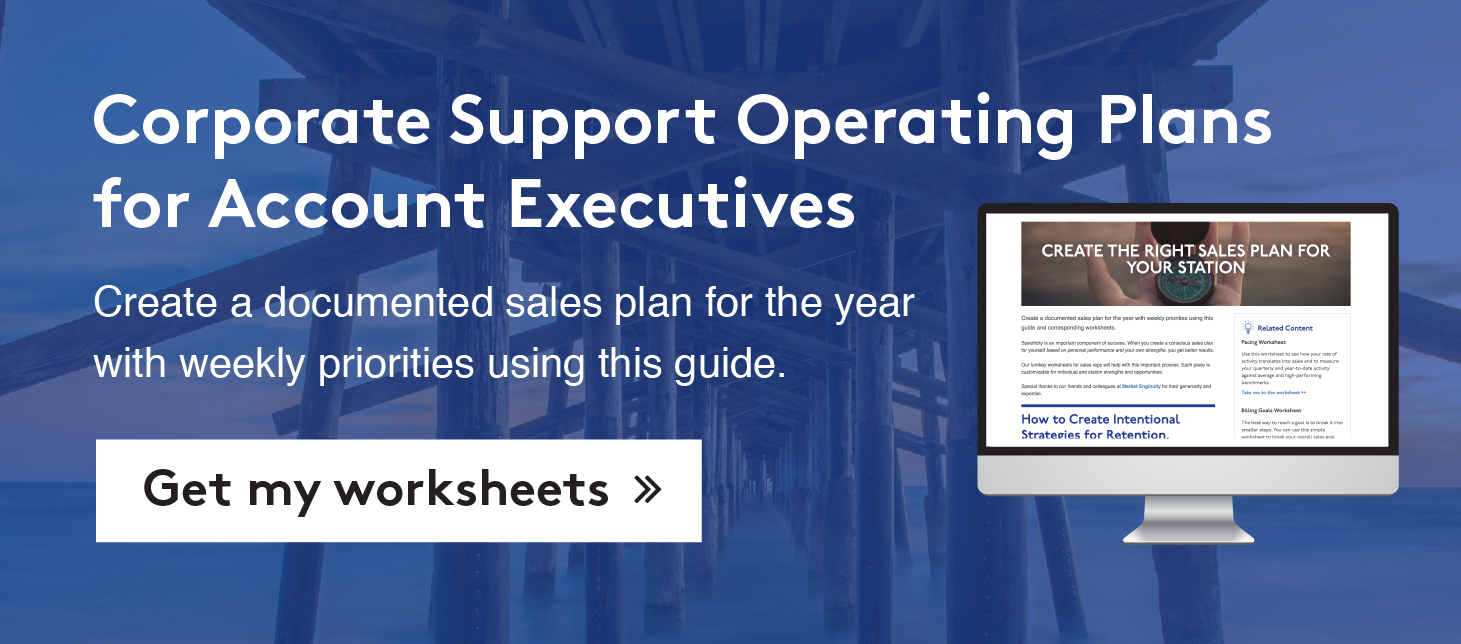Related Articles
Subscribe to the Greater Public newsletter to stay updated.
This site is protected by reCAPTCHA and the Google Privacy Policy and Terms of Service apply.

How many of your underwriters also buy sponsorships of your other offerings and opportunities? I’m referring to items such as web ads on your station’s website or e-newsletters, program guides, and/or mobile apps? How many of your current underwriters sponsor your station’s special programming features or events?
If your answer is “not enough of them,” then you’re missing opportunities to generate incremental revenue for your station through upselling or cross-selling.
Upselling means showing the value and encouraging the purchase of a related type of on-air media in addition to your underwriter’s current schedule. For example, an underwriter who is buying a “Run of Schedule” could also be a sponsor of one or more specific on-air programs (i.e. music, news, or public affairs).
Cross-selling is recommending that, in addition to their on-air schedule, your underwriter purchases complementary sponsorships like station events, online marketing opportunities, or other promotions. Taking a multi-media approach that includes various marketing opportunities will bolster your underwriter’s name recognition and top-of-mind awareness as they build upon the recognition they receive from their current buy.
Upselling and cross-selling is necessary to leverage more sales with your existing underwriters. While the two terms are often used interchangeably, both offer distinct benefits and can be effective when used in tandem.

When asking for additional business, the goal is two-fold: strengthen your relationship with key contacts in your account; and provide you with the intelligence and insight to maximize sales.
Take a look at this four-step strategy to intelligently upsell and/or cross-sell to your underwriters:
Select your primary contact(s) in each account:
Begin by listing your accounts with their contact information. If you have several contacts at each account, include all related contacts, such as your contact(s) at the advertising agency or marketing firm if one is involved. For each account, prioritize your primary contact, the highest-ranking contact, or the person with whom you have the best relationship. That’s your first person to contact.
Rate the quality of your relationship with each contact:
Use a simple relationship rating system to rate your relationship with each contact. Ex: 1= Poor to 5 = Excellent. Be consistent with how you rate your underwriter relationships by using a defined system to evaluate and rate each of your contacts. Then determine how much time and effort should go into upgrading your relationship or maintaining what you already have. Consider surveying your underwriters to understand their level of satisfaction using these questions:
Determine the level of business you’re conducting with each:
When you’re talking with your underwriters, ask about the amount of business you’re doing with them based on their overall spend. Are you 5% of their total expenditures? Are you 25%? This is where the quality of your relationship can make a difference. The better the relationship you have with your underwriters, the more trust they have in you, and the more information they’re likely to share. Here are some upselling questions to ask your underwriters:
After you’ve met with each underwriter, ask yourself these questions:
Prioritize your top contacts and your strategy:
This should be performed based on the quality of your relationship with your underwriter and the upside potential. Here are three examples:
1. Good Relationship with Minimal Upside Potential
In this situation, you have a very good relationship with your underwriter, but because they have no additional budget and can’t spend any more, there’s minimal upside potential. Your focus and course of action should be to maintain that account against competitors and continue to reinforce your relationship with the underwriter.
2. Low-Quality Relationship with Good Upside Potential
If you don’t have a strong relationship with an underwriter who has a strong upside potential (i.e. say you represent only 10% of their media budget each year), then you need to first focus on developing and building the relationship so you can earn more of their business in the future.
3. Good Relationship with Good Upside Potential
This is your ideal scenario. You’ve established and built a relationship and developed trust with this underwriter. Perhaps you haven’t been their preferred media long enough for them to turn over more of their business to you,but now is the time to set a strategy meeting with the underwriter to gain more insight on their future plans so you can determine where you can provide them more value and expand your media offerings.
Upselling and cross-selling strategies are critical to increasing your sales. But remember, value has to be at the core of your interactions with your underwriter. Use this process to help guide your strategy for delivering more value to your customers and more revenue for you.


New to Greater Public? Create an account.